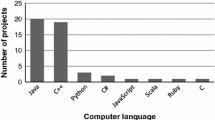Abstract
For large international companies with their own simulation team, it is often hard to make a decision related to selection of new discrete-event simulation software. This paper presents a comprehensive discrete-event simulation software selection methodology that has been successfully used for decision making at Accenture consulting company. Accenture already used a simulation tool at the start of the project, but wanted to find out whether the current tool used still was the most appropriate one for its needs, and to evaluate the latest discrete-event simulation tools. The developed methodology consists of two phases: phase 1 quickly reduces the long list to a short list of packages, and phase 2 matches the requirements of the company with the features of the simulation package in detail. Successful application of the proposed methodology indicates its possible application for decision making in other large organisations, provided that the study is performed by a third party to avoid risks of influencing the outcome of the selection process.



Similar content being viewed by others
References
Balci O (2001). A methodology for certification of modeling and simulation applications. ACM T Model and Comput Simul (TOMACS) 11(4): 352–377.
Banks J (1991). Selecting simulation software. In: Nelson BL and Kelton WD (eds). Proceeding of the 1991 Winter Simulation Conference. IEEE: Piscataway, NJ, pp. 15–20.
Banks J and Carson JS (2004). Discrete-Event System Simulation, 4th edn. Prentice Hall: United States.
Banks J and Gibson RR (1997). Selecting simulation software. IIE Solutions May: 30–32.
Bosilj-Vuksic V, Ceric V and Hlupic V (2007). Criteria for the evaluation of business process simulation tools. Interdisciplinary J Inform Knowl Manage 2: 73–88.
Bots PWG and Hulshof JAM (2000). Designing multi-criteria decision analysis processes for priority setting in health policy. J Multi-Criteria Decis Anal 9(1–3): 56–75.
Bovone M, de Ferarri V and Manuelli R (1989). How to choose a useful simulation software. In: Lazeolla G, Lehman A and van den Herik HJ (eds). Proceedings of the 1989 European Simulation Multiconference. SCS: San Diego, pp. 39–43.
Burns D (2007). Systemic Action Research: A Strategy for Whole System Change. Policy Press: Bristol.
Chikofsky EJ, Martin DE and Chang H (1992). Assessing the state of tools—assessment. IEEE Software May: 18–21.
Christy DP and Watson HJ (1983). The application of simulation: A survey of industry practice. Interfaces 13(5): 47–52.
Davis L and Williams G (1994). Evaluating and selecting simulation software using the analytic hierarchy process. Integr Manuf Syst 5(1): 23–32.
Deaver RA (1987). Selecting a manufacturing simulation system. CIM Rev 3(3): 6–8.
Ekere NN and Hannam RG (1989). An evaluation of approaches to modelling and simulating manufacturing systems. Int J Prod Res 27(4): 599–611.
Feinstein AH and Cannon HH (2002). Constructs of simulation evaluation. Simulat Gaming 33(4): 425–440.
Hlupic V (1997). Selecting simulation software using SimSelect. Simulation 69(4): 231–239.
Hlupic V and de Vreede GJ (2005). Process modelling using discrete-event simulation: Current opportunities and future challenges. Int J Simul Process Model 1(1/2): 72–78.
Hlupic V and Paul RJ (1996). A methodological approach to manufacturing simulation software selection. Comput Integr Manuf Syst 9(1): 49–55.
Hlupic V, Irani Z and Paul RJ (1999). Evaluation framework for simulation software. Int J Adv Manuf Tech 15: 366–382.
Holder K (1990). Selecting simulation software. OR Insight 3(4): 19–24.
Kelton DW (2006). Simulation with Arena. McGraw Hill Higher Education: Boston, USA.
Law AM and Kelton DW (2000). Simulation Modeling and Analysis, 3rd edn. McGraw-Hill: Boston, USA.
Lootsma FA (1999). Multi-criteria Decision Analysis via Ratio and Difference Judgment. Kluwer Academic Publishers: Amsterdam, The Netherlands.
Lyons AC, Nemat M and Rowe WB (2000). A comparative study of alternative approaches to modelling the operations of a small enterprise. Work Study 49(3): 107–114.
Mackulak GT, Cochran JK and Savory PA (1994). Ascertaining important features for industrial simulation environments. Simulation 63(4): 211–221.
Nikoukaran J, Hlupic V and Paul RJ (1999). A hierarchical framework for evaluating simulation software. Simulat Pract Theory 7: 219–231.
Pidd M (1989). Choosing discrete simulation software. OR Insight 2(3): 22–23.
Pidd M (2004). Computer Simulation In Management Science, 5th edn. John Wiley & Sons: Chichester, UK.
Robinson S (2003). Simulation: The Practice of Model Development and Use. John Wiley and Sons Ltd: Chichester, UK.
Sahay BS and Gupta AK (2003). Development of software selection criteria for supply chain solutions. Ind Manage Data Syst 103(2): 97–110.
Shannon RE (1992). Introduction to simulation. In: Swain JJ, Goldsman D, Crain RC and Wilson JR (eds). Proceedings of the 1992 Winter Simulation Conference. SCS: San Diego, pp. 65–73.
Shanklin T, Roper K, Yegneswaran PK and Marten MR (2001). Selection of bioprocess simulation software for industrial applications. Biotec Bioeng 72(4): 483–489.
Swain JJ (1999). Imagine new worlds. OR/MS Today, February, pp 38–41.
Tobias R and Hofmann C (2004). Evaluation of free Java-libraries for social-scientific agent based simulation. J Artif Soc Soc Simulat 7(1) http://jasss.soc.surrey.ac.uk/7/1/6.html.
Vogel DR and Vreede GJ (1999). The organizational application of GSS: A comparison across time and national boundaries. In: Vreede GJ, de Ackermann F (eds), Proceedings of the 10th EuroGDSS Workshop, Copenhagen.
Acknowledgements
The authors would like to thank software vendors who participated in the evaluation processes especially Simul8 Corporation, Imagine That Inc., Enterprise Dynamics Corp., ProModel Corporation, and Rockwell Software. The authors would also like to thank Mr Gilles Bardonnet of Accenture, Paris, for his contribution and feedback provided for the project described in this manuscript. Dr Tewoldeberhan has conducted research described in this paper when he was at Delft University of Technology.
Author information
Authors and Affiliations
Corresponding author
Rights and permissions
About this article
Cite this article
Tewoldeberhan, T., Verbraeck, A. & Hlupic, V. Implementing a discrete-event simulation software selection methodology for supporting decision making at Accenture. J Oper Res Soc 61, 1446–1458 (2010). https://doi.org/10.1057/jors.2009.119
Received:
Accepted:
Published:
Issue Date:
DOI: https://doi.org/10.1057/jors.2009.119




